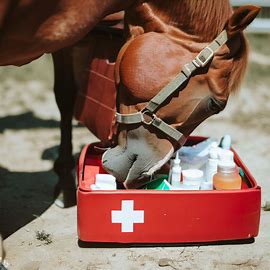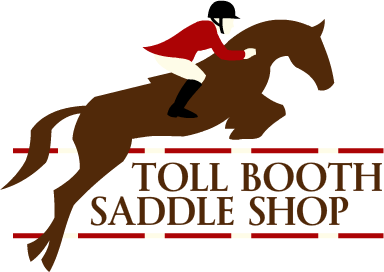
Having a well-stocked first aid kit is essential for riders to handle minor injuries or other minor medical emergencies for both themselves and their horses. Here’s a list of items that riders should consider including in their first aid kits:
For Horses:
1. Sterile saline solution: Used for cleaning wounds and flushing eyes.
2. Non-stick sterile dressings: Ideal for covering wounds and preventing further contamination.
3. Roll of Adhesive tape.
4. Vet wrap or similar: Flexible bandage for securing dressings or creating temporary hoof protection.
5. Sterile gauze pads: Used for cleaning wounds and applying medications.
6. Antiseptic solution/spray: Helps disinfect wounds and prevent infections
7. Hoof pick: Used to clean hooves and remove debris.
8. Disposable gloves: Protects the person administering first aid from contamination.
9. Scissors: Handy for cutting bandages or removing tangled hair.
10. Thermometer: Allows you to monitor your horse’s temperature in case of illness.
11. Wound care such as Veterinus Derma Gel 4 in 1 or Wound Kote.
12. Poultice pads or sole pack patties for hoof problems
13 List of Vet and emergency numbers
Click here to view our first aid supplies
For Riders:
1. Adhesive bandages: Various sizes for covering minor cuts or blisters.
2. Antiseptic wipes: Cleansing wipes to sterilize the skin before applying bandages.
3. Disposable gloves: Protects you and the injured person from contamination.
4. Pain relief medication: Over-the-counter pain relievers suitable for adults.
5. Tweezers: Useful for removing splinters or debris from the skin.
6. CPR mouth barrier or mask: Provides protection during rescue breaths.
7. Instant cold pack: Helps reduce swelling and alleviate pain.
8. Sunscreen: Protects against harmful UV rays during outdoor activities.
9. Insect repellent: Keeps bugs at bay during rides in insect-prone areas.
10. Emergency contact information: A list of important phone numbers, including your veterinarian and emergency services.
11. Pencil and paper to write down instructions
12. Rescue whistle to call for help if no phone is available
Remember to periodically check your first aid kit to ensure that supplies are not expired, and restock any items that have been used or depleted. Additionally, it’s crucial to have the necessary knowledge and training in first aid procedures for both humans and horses. Consider taking a first aid and CPR course specific to equine emergencies to be better prepared to handle any situation.
click here for our blog on when to call the vet


Recent Comments